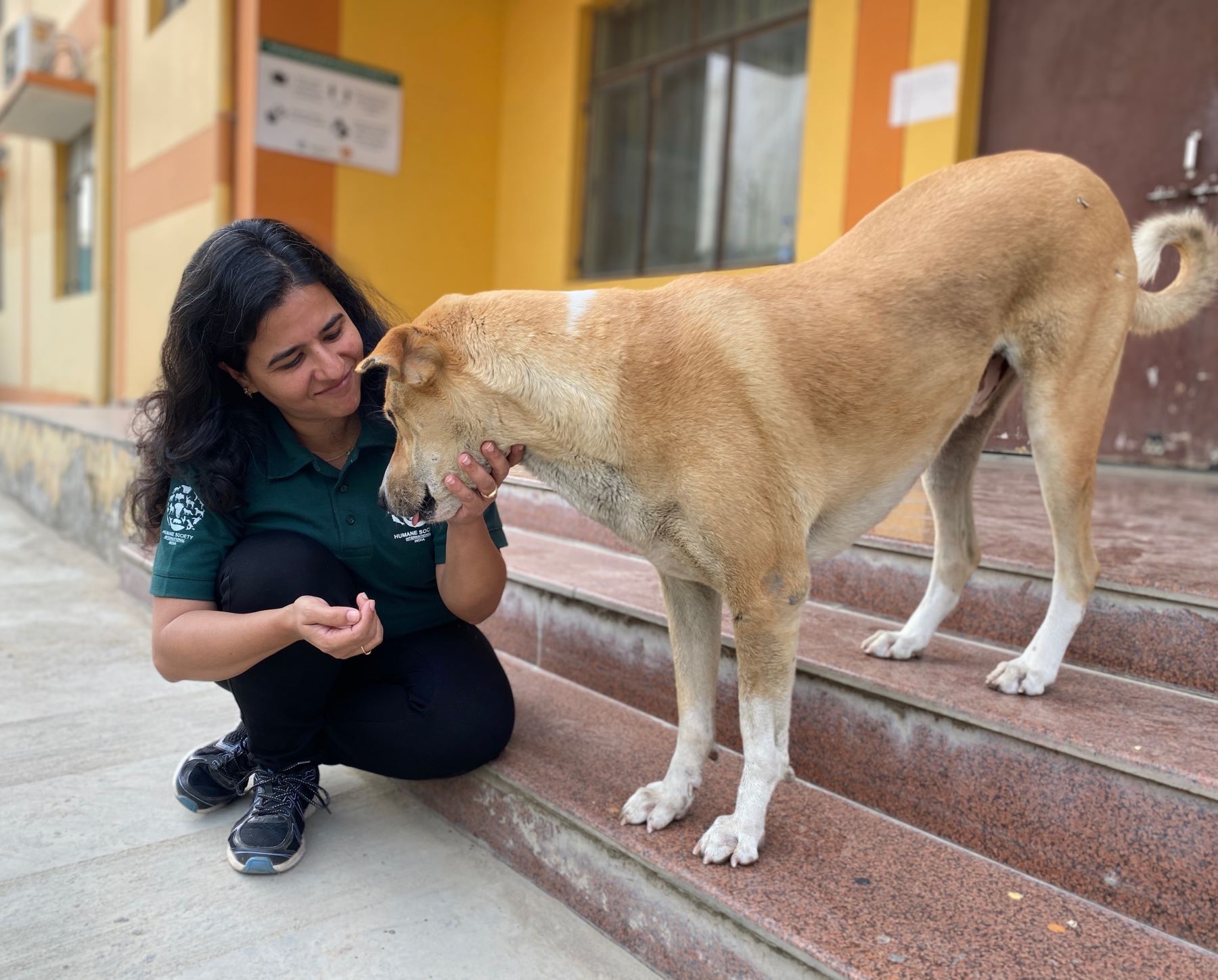
The situation for dogs and cats varies from culture to culture. In some places, they are treated well, given scraps, even considered part of a family, though some may still remain outdoors and roam the streets. Sometimes they serve to guard property or control pests but are unlikely to receive veterinary care or concern for their welfare. In other communities, they are disliked, or even feared, and may be kicked, hit or stoned if they come too close. Although cats on the street tend to do better than dogs at fending for themselves, the lives of both species are filled with misery.
Challenges
A community’s population of roaming animals is both an animal welfare and public health and safety problem. Animals on the streets can face starvation, abuse or even death. Dogs are responsible for most cases of rabies transmission to humans, and both dogs and cats can spread a host of other diseases. Anywhere dogs and people co-exist, particularly in densely packed urban areas, there is the risk of dog bites and road accidents caused by roaming animals. There is also an economic toll, such as expensive human rabies post-exposure treatment and negative consequences for tourism.
Governments, which are responsible for safeguarding public health and safety, often lack the resources and/or knowledge to develop and implement humane and effective programs to manage dog and cat populations, and to tackle the public health issues that may result from having roaming dogs and cats in a community. The lack of information and resources has led many governments to resort to cruel and ineffective means of population control, such as mass sheltering, poisoning, electrocution and shooting.
Another major challenge to adequate dog and cat welfare is a lack of training opportunities for veterinarians to develop skills in high-quality spay/neuter surgery.
In addition to not having access to affordable and accessible veterinary services, families and individuals may lack an understanding of the welfare needs of pets and roaming animals in their community. Adoption of homeless dogs and cats is still a relatively new concept in many countries. And, unfortunately, even in places where adoption is common, there are not enough homes available to keep up with the number of litters born.
As a result of varying political, cultural, economic and geographic factors that affect a country’s animal welfare situation, there is no single solution to human-animal conflict and animal suffering that can be applied universally.
Opportunities
Studies by Humane Society International and others show that in some countries, such as Chile, Bolivia and Mauritius, most roaming dogs are, in fact, owned. It is estimated that 35%-40% of the global population of dogs is allowed to roam without supervision. Similar studies show that dogs considered unowned are regularly given food by one or more individuals in a community or have ready access to food and water given their proximity to humans. Since the dog population size in any community is mainly dependent on the actions of humans, such as providing food and attention, we can improve animal welfare by creating opportunities for humans to behave positively toward animals in their community. Pet care education, community engagement and empowerment, training opportunities and accessible and affordable veterinary services are part of a holistic and humane approach to dog and cat population management.
Our work

Over the past 25 years, Humane Society International has been developing culturally sensitive approaches to managing roaming dogs and cats, humanely, effectively and sustainably. We work in a number of countries in Asia, Africa, North America, Central America and South America to extend a philosophy of humane animal management. We provide guidance to governments at all levels, local organizations, universities, veterinarians and communities on ways to address the root causes of animal-human conflict and animal suffering.
The goals of our dog and cat welfare programs are to:
- Improve the welfare of dogs and cats by providing access to quality veterinary services that are affordable.
- Promote humane treatment of roaming dogs and cats; in particular, end the use of inhumane and lethal management techniques.
- Strengthen and support the skills and capacity of local veterinary services to address dog and cat population management and welfare.
- Encourage positive human-dog interactions by fostering community engagement efforts to change human behavior and attitudes toward community and family animals.
- Establish sustainable programs by training and empowering local stakeholders to facilitate local institutions adopting and running these programs as their own.
To achieve these goals HSI advocates a humane and tailored solution that includes monitoring and evaluation, sterilization, vaccination, community engagement, education, advocacy, legislation, and well-run temporary holding facilities and adoption programs.
Together, these components provide the only scientific, effective and humane approach to improve dog and cat welfare in the long term.
Ways we help
The specifics of what we do are tailored to a location’s unique situation. The broad outline of our approach, after an initial assessment of needs has been completed, may include:
- Conducting outreach and establishing partnerships with municipalities, national authorities and local communities and animal welfare/protection organizations.
- Implementing monitoring and evaluation to establish baselines and assess impact.
- Initiating or expanding existing sterilization programs.
- Initiating or expanding existing rabies eradication programs.
- Providing training for local veterinarians and dog-handling personnel to emphasize high-quality, high-volume, safe sterilization surgery and humane dog and cat catching and handling.
- Empowering communities to be more engaged in understanding and caring for the welfare needs of the dogs and cats in their neighborhoods.
- Encouraging a culture of adoption.
- Intervening when governments take inhumane action against roaming animals.
- Assisting with the development of a successful program and a planned and sustainable transition to local stakeholders.
Other ways HSI helps dogs and cats

HSI assists governments in disaster preparedness and provides relief to animals in need, including dogs and cats, after disasters occur. We assist in the passage of laws and regulations to protect these animals. We also campaign against the dog and cat meat trade in parts of Asia. Our reach extends beyond the countries in which we have hands-on programs. HSI’s Veterinary Training Program in Latin America works with governments, universities and independent veterinarians to strengthen skills in high-quality spay/neuter surgery. The Humane Society of the United States and HSI organize Animal Care Expo, a conference offering virtual and in-person attendees an opportunity to learn from experts in the field of dog and cat welfare and population management.
